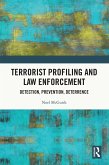Part I discusses the evolution, theories, and psychology of terrorism. In this part, the authors outline the rationale of the book, capturing how terrorism has changed over the years. In Part II, the book explores the new phase of domestic terrorism, drawing on left-wing extremism, right-wing extremism, and jihadist attackers in the United States with a focus on their use of lone actor attacks and decentralized networks. Part III focuses on the new phase of international terrorism and discusses operational organization and strategies of international terror groups and their capabilities in the form of combat operations and small group operatives in Sub-Saharan Africa, the Middle East, and South-East Asia. Part IV covers terrorists' use of technology for propaganda, recruitment, training, and operations, with examples from the use of technology in recruiting and training by Al-Qaeda and Islamic State in Iraq and Syria (ISIS). Part V brings this information together and analyzes the criminal justice response, including building partnerships with counterterrorism agencies, intelligence sharing, and the use of courts to bring terrorist actors to justice.
Ideal as a text in terrorism, counterterrorism, and homeland security courses, this book is highly readable for criminal justice, psychology, and sociology students and professors, as well as policymakers and practitioners concerned with countering terrorism at home and abroad.
Dieser Download kann aus rechtlichen Gründen nur mit Rechnungsadresse in A, B, BG, CY, CZ, D, DK, EW, E, FIN, F, GR, HR, H, IRL, I, LT, L, LR, M, NL, PL, P, R, S, SLO, SK ausgeliefert werden.









